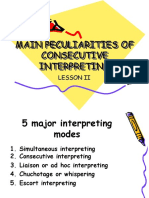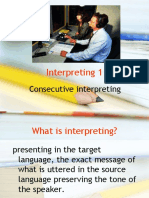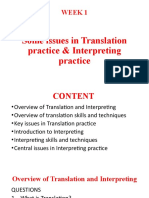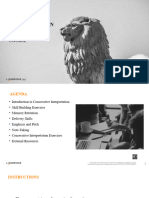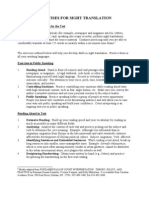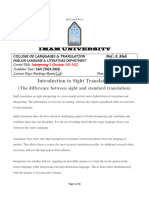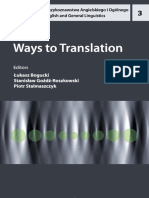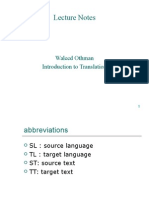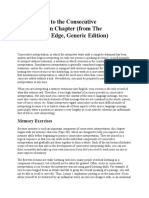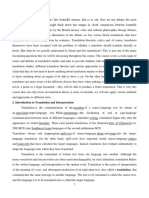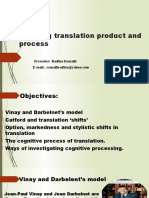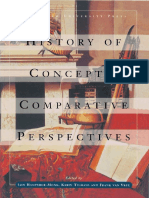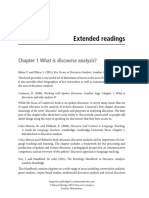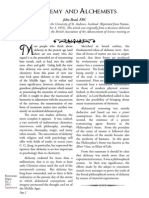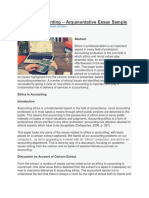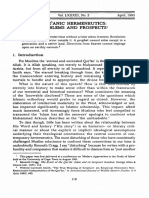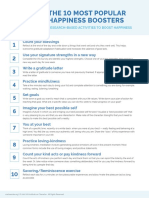0% found this document useful (0 votes)
473 views16 pagesConsecutive Interpreting Guide
This document outlines the principles of consecutive interpreting. It discusses 6 key aspects: 1) Understanding the ideas rather than literal words, 2) Accounting for different text types such as arguments or descriptions, 3) Identifying main ideas and making summaries, 4) Analyzing logical links between ideas, 5) Developing memory techniques, and 6) Re-expressing the meaning clearly without being word-for-word. It also provides guidance on note-taking, focusing on capturing main ideas, structure, and links between concepts in a concise yet unambiguous manner. Professional interpreters undergo 3-4 years of training to develop these skills.
Uploaded by
Melinda Ambrus-MoiszaCopyright
© © All Rights Reserved
We take content rights seriously. If you suspect this is your content, claim it here.
Available Formats
Download as PPT, PDF, TXT or read online on Scribd
0% found this document useful (0 votes)
473 views16 pagesConsecutive Interpreting Guide
This document outlines the principles of consecutive interpreting. It discusses 6 key aspects: 1) Understanding the ideas rather than literal words, 2) Accounting for different text types such as arguments or descriptions, 3) Identifying main ideas and making summaries, 4) Analyzing logical links between ideas, 5) Developing memory techniques, and 6) Re-expressing the meaning clearly without being word-for-word. It also provides guidance on note-taking, focusing on capturing main ideas, structure, and links between concepts in a concise yet unambiguous manner. Professional interpreters undergo 3-4 years of training to develop these skills.
Uploaded by
Melinda Ambrus-MoiszaCopyright
© © All Rights Reserved
We take content rights seriously. If you suspect this is your content, claim it here.
Available Formats
Download as PPT, PDF, TXT or read online on Scribd
/ 16
